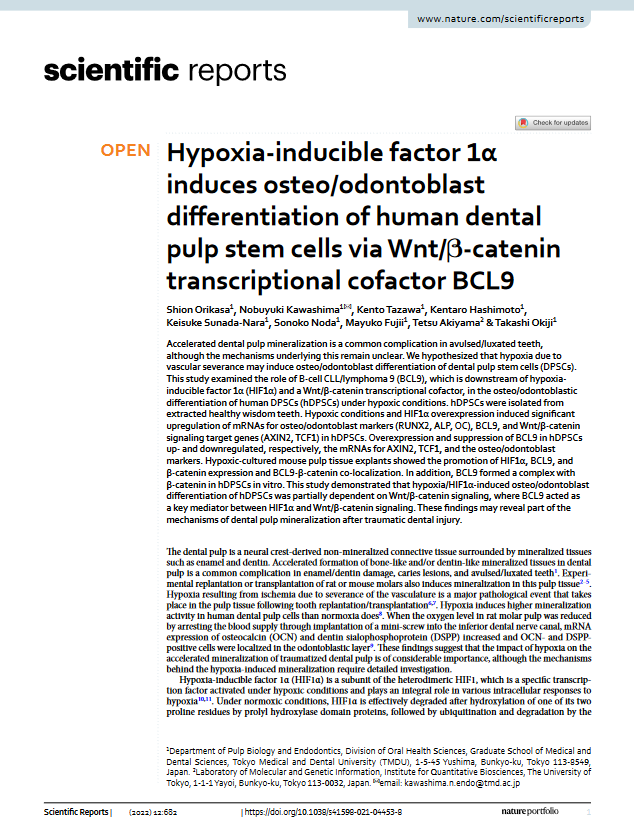21.10.2022
Hypoxia-inducible factor 1α induces osteo/odontoblast differentiation of human dental pulp stem cells via Wnt/β-catenin transcriptional cofactor BCL9
Scientific Reports, 2022
Abstract
Accelerated dental pulp mineralization is a common complication in avulsed/luxated teeth, although the mechanisms underlying this remain unclear. We hypothesized that hypoxia due to vascular severance may induce osteo/odontoblast differentiation of dental pulp stem cells (DPSCs). This study examined the role of B-cell CLL/lymphoma 9 (BCL9), which is downstream of hypoxia-inducible factor 1α (HIF1α) and a Wnt/β-catenin transcriptional cofactor, in the osteo/odontoblastic differentiation of human DPSCs (hDPSCs) under hypoxic conditions. hDPSCs were isolated from extracted healthy wisdom teeth. Hypoxic conditions and HIF1α overexpression induced significant upregulation of mRNAs for osteo/odontoblast markers (RUNX2, ALP, OC), BCL9, and Wnt/β-catenin signaling target genes (AXIN2, TCF1) in hDPSCs. Overexpression and suppression of BCL9 in hDPSCs up- and downregulated, respectively, the mRNAs for AXIN2, TCF1, and the osteo/odontoblast markers. Hypoxic-cultured mouse pulp tissue explants showed the promotion of HIF1α, BCL9, and β-catenin expression and BCL9-β-catenin co-localization. In addition, BCL9 formed a complex with β-catenin in hDPSCs in vitro. This study demonstrated that hypoxia/HIF1α-induced osteo/odontoblast differentiation of hDPSCs was partially dependent on Wnt/β-catenin signaling, where BCL9 acted as a key mediator between HIF1α and Wnt/β-catenin signaling. These findings may reveal part of the mechanisms of dental pulp mineralization after traumatic dental injury.
GFAP antibody GTX108711 manufactured by our partner GeneTex is used in this study.


